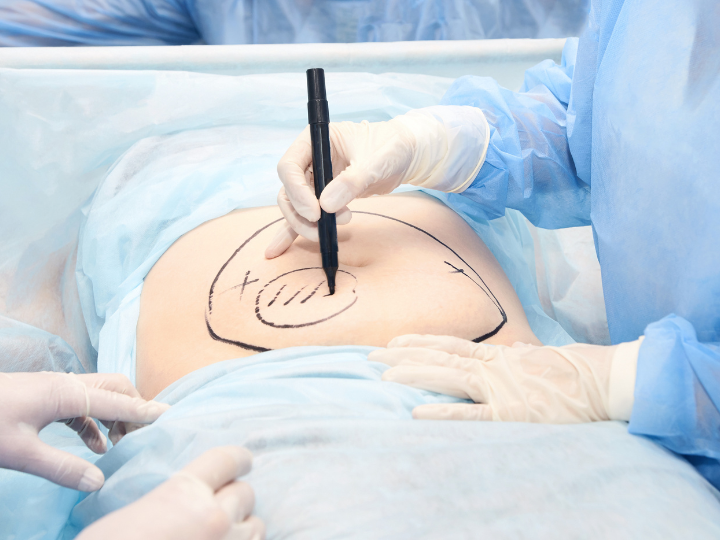-
a comprehnsive guide to the popular body contouring procedure

Introduction to Liposuction
What is Liposuction?
Table of Contents
ToggleLiposuction is a cosmetic surgical procedure aimed at removing excess fat deposits from specific areas of the body to improve contours and proportions. It is one of the most commonly performed cosmetic surgeries worldwide.
History of Liposuction
Liposuction has evolved significantly since its inception in the 1970s. The procedure was pioneered by Dr. Giorgio Fischer and has since undergone numerous advancements in techniques and technology, leading to safer and more effective outcomes.
Common misconceptions about Liposuction
There are several misconceptions surrounding liposuction, including the belief that it is a weight loss solution or that it can eliminate cellulite. In reality, liposuction is best suited for individuals who are close to their ideal weight and have localized fat deposits resistant to diet and exercise
Types of Liposuction Procedures
Traditional liposuction Traditional liposuction, also known as suction-assisted liposuction (SAL), involves the removal of fat using a cannula (thin tube) attached to a vacuum device. This technique remains widely used and effective for contouring various body areas.
Laser-assisted liposuction Laser-assisted liposuction, such as SmartLipo or SlimLipo, utilizes laser energy to liquefy fat cells before suctioning them out. This technique can lead to smoother results, reduced recovery time, and enhanced skin tightening compared to traditional liposuction.
. Ultrasound-assisted liposuction Ultrasound-assisted liposuction (UAL), such as VASER liposuction, employs ultrasound technology to break down fat cells before extraction. UAL is particularly useful for treating fibrous areas and achieving precise body sculpting.
Who is a Candidate for Liposuction?
Ideal candidates for liposuction Ideal candidates for liposuction are individuals who are close to their ideal weight but have localized areas of stubborn fat that do not respond to diet and exercise. They should be in good overall health and have realistic expectations about the outcomes of the procedure.
Factors that may disqualify someone from getting liposuction Certain medical conditions, such as uncontrolled diabetes or heart disease, may disqualify someone from undergoing liposuction. Additionally, individuals with unrealistic expectations or unstable psychological health may not be suitable candidates for the procedure.
Preparing for a liposuction procedure Before undergoing liposuction, patients will undergo a thorough evaluation with their surgeon, including medical history assessment and physical examination. They may be advised to discontinue certain medications and supplements that can increase the risk of bleeding during surgery.

What to Expect During and After Liposuction
The liposuction procedure step by step During the liposuction procedure, the surgeon will make small incisions in the targeted areas and insert the cannula to suction out fat deposits. The length of the procedure depends on the extent of treatment and the technique used.
Recovery process and timeline After liposuction, patients can expect some swelling, bruising, and discomfort in the treated areas. They will be provided with postoperative instructions, including wearing compression garments and avoiding strenuous activities during the initial recovery period.
Potential risks and complications of liposuction While liposuction is generally safe, it carries potential risks and complications, including infection, bleeding, fluid accumulation, and changes in sensation. Patients should be aware of these risks and follow their surgeon’s recommendations for minimizing them.

Benefits and Limitations of Liposuction
Benefits of liposuction for body contouring
Liposuction offers numerous benefits, including improved body contours, enhanced self-confidence, and targeted fat reduction in specific areas. It can help achieve a more proportionate and aesthetically pleasing physique.
Limitations of liposuction as a weight loss solution
While liposuction can remove significant amounts of fat, it is not a substitute for weight loss or a healthy lifestyle. It is best suited for individuals who are already close to their ideal weight and seek refinement of body contours rather than significant weight reduction.
Long-term results and maintenance after liposuction
The long-term results of liposuction depend on various factors, including the patient’s lifestyle, genetics, and aging process. Maintaining a stable weight through regular exercise and a balanced diet can help prolong the results of liposuction and prevent fat re-accumulation in treated areas.
FAQ's
Liposuction is not a weight loss solution, but rather a body contouring procedure that removes stubborn fat deposits.
The recovery time for liposuction varies depending on the extent of the procedure, but most patients can return to work within a few days to a week.
Liposuction permanently removes fat cells from targeted areas, but maintaining a healthy diet and exercise routine is crucial to prevent new fat deposits from forming.

Dr. Akash, is a well trained Cosmetic Plastic surgeon in Breast surgery techniques. He has worked with top cosmetic surgeons in India and implements the gained knowledge into defining the art of cosmetic surgery to treat his patients and give them a naturally curved and contoured Breasts that they desire.
We, at AT Aesthetics, are committed to provide customized and transparent facial rejuvenation services. For any queries or booking an appointment click the button, we will get back to you soon.
